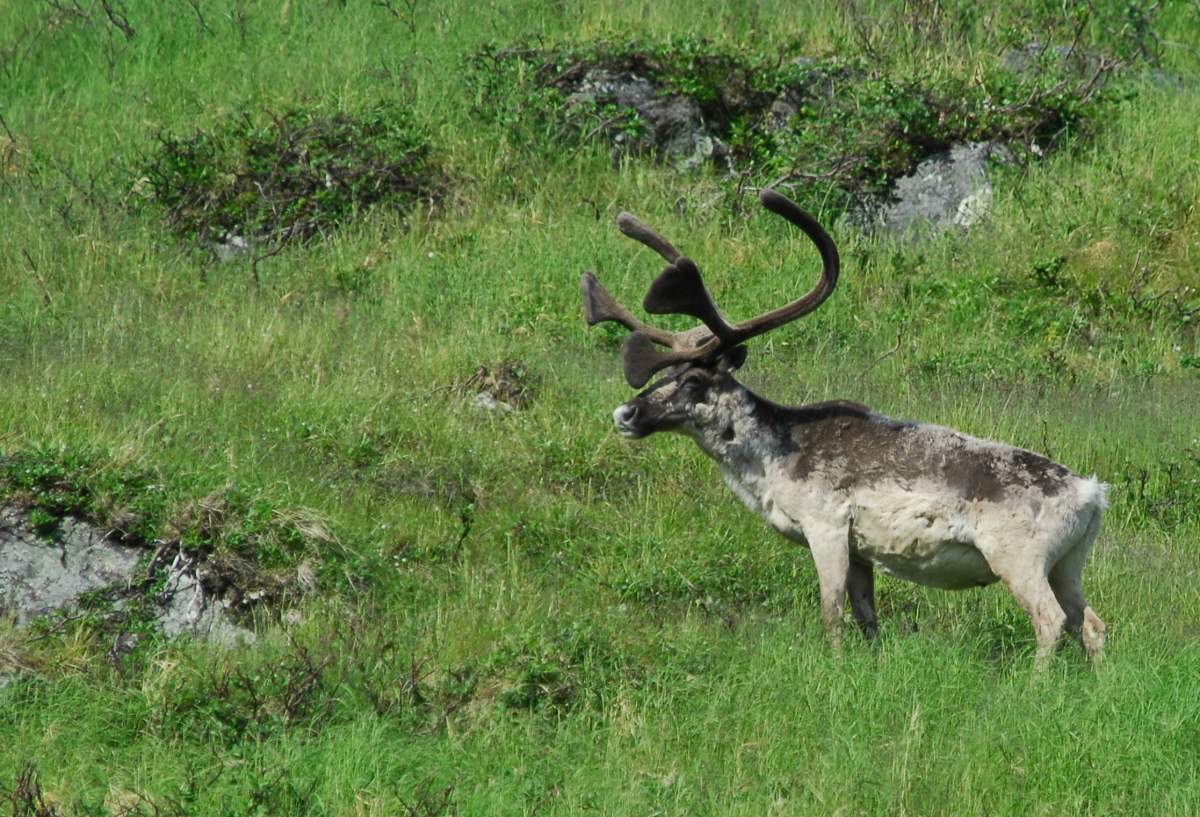The Alberta government has directed a forestry company to harvest old-growth trees in caribou habitat where the province has already spent millions and signed agreements to help the herds survive, environmental groups say.

The Canadian Parks and Wilderness Society and the Alberta Wilderness Association said Thursday that government maps show West Fraser Timber has been directed to clear-cut blocks that contain century-old trees next to a park in northwest Alberta.
They said some blocks next to the Willmore Wilderness Area are in caribou ranges that are already more than 90 per cent damaged and are covered under agreements signed with Ottawa supposed to protect the herds while land-use planning continues.
“It’s one of the last remaining intact pieces of the winter range for caribou here,” said Gillian Chow-Fraser of the wilderness association.
“It’s really important to be conserving what caribou habitat you have left.”
West Fraser said it’s following direction from the government.
“We have been directed by government to operate in this specific area and away from other areas… until the Berland Sub-Regional Taskforce on caribou recovery completes its work,” spokeswoman Heather Colpitts wrote in an email.
“The province’s direction to operate in these areas is intended as an interim measure to allow harvesting and protect jobs and caribou.”
- Carney, Trump and Sheinbaum talk trade in Washington at FIFA World Cup draw
- Newfoundland girl’s disappearance prompts calls for tougher laws to stop abductions
- Health Canada recalls glucose monitors that may give ‘incorrect’ readings
- Industry experts question Saab’s pitch to bring 10,000 jobs to Canada
The logging plans, which are supposed to begin this month, would affect the A La Peche and Little Smoky herds, two of Alberta’s most endangered. The Alberta government has spent millions to keep the threatened herds alive, trying to restore disturbed forest and — since 2005 — shooting hundreds of predatory wolves from helicopters.

Get daily National news
Government documents suggest the plans date from 2018, but Chow-Fraser said much has changed since then.
Recovery plans under the Species At Risk Act have begun. Land-use plans are nearing completion. Athabasca rainbow trout, also native to the area, have been listed as an endangered species and their critical habitat identified.
As well, the herds are now covered by a federal emergency protection order. That would normally allow Ottawa to step in with conservation measures, but it’s in abeyance after the two governments signed a deal to come up with a caribou recovery strategy.
Alberta Agriculture and Forestry spokeswoman Mackenzie Blyth said in an email that the province’s plans accord with that agreement.
“Alberta’s forest management plans are designed to align with sub-regional planning and the work being done by the caribou sub-regional task forces,” she wrote.
“Sustainable forest management seeks to balance a variety of environmental, Indigenous, social and economic values and can be used to help promote forest resilience and restore critical wildlife habitat over the long term.”
Chow-Fraser said the blocks slated for logging are a small part of West Fraser’s tenure and the company should be directed to harvest elsewhere, at least until land-use plans are complete.
“It kind of undermines the commitments (the governments have) made to regional planning.”
While parts of it have been cut before, she said those cutblocks date from the 1960s and have almost grown enough to match the nearby untouched forests.
“If you log it now, you’re back to square one,” she said.
“It’s such a rarity to have trees that are this old and this intact in a caribou range. I really would hope that all effort is put in to save it.”
Alberta’s United Conservative government has put a priority on the province’s forestry industry. Agriculture and Forestry Minister Devin Dreeshen has said a 33 per cent increase in harvest is sustainable.







Comments